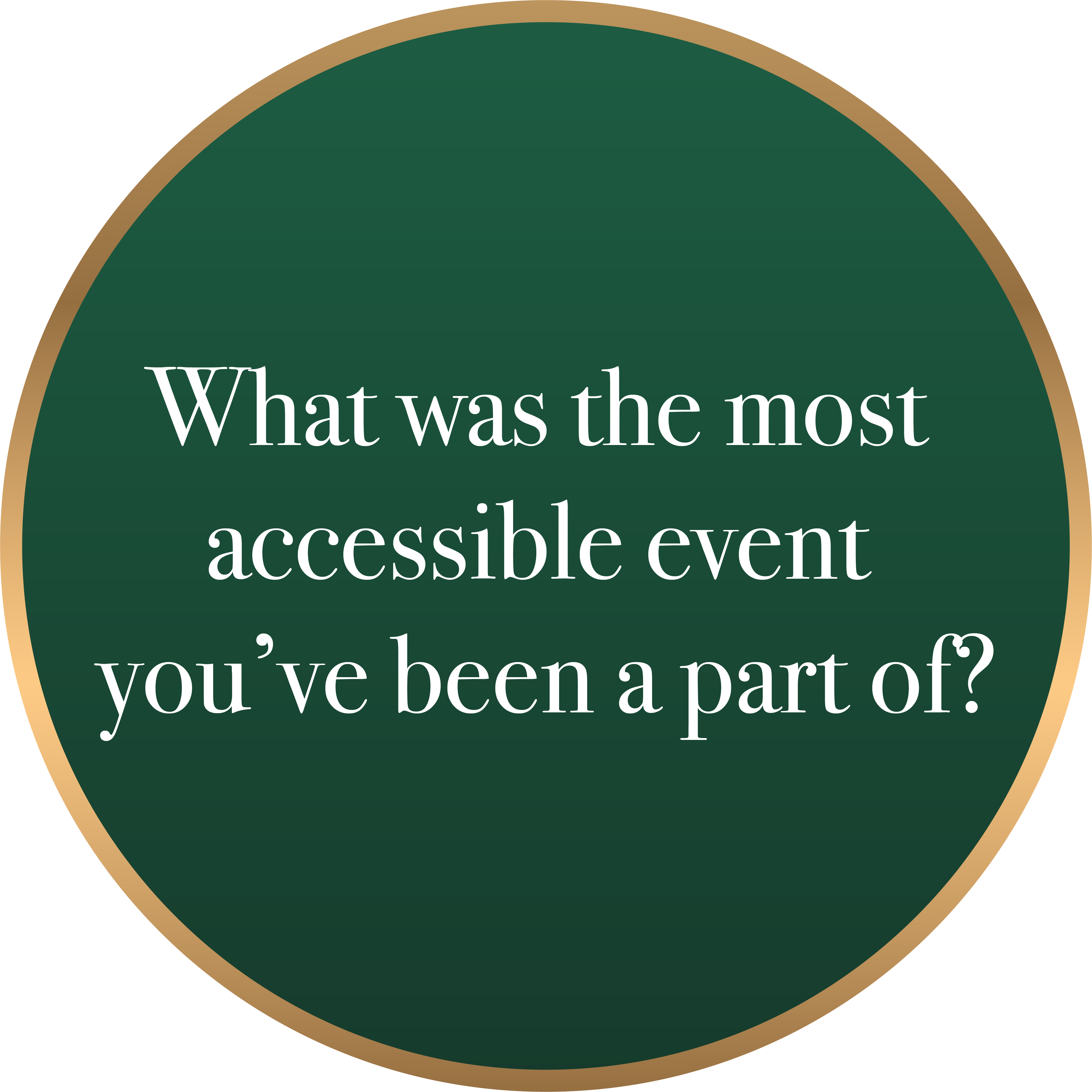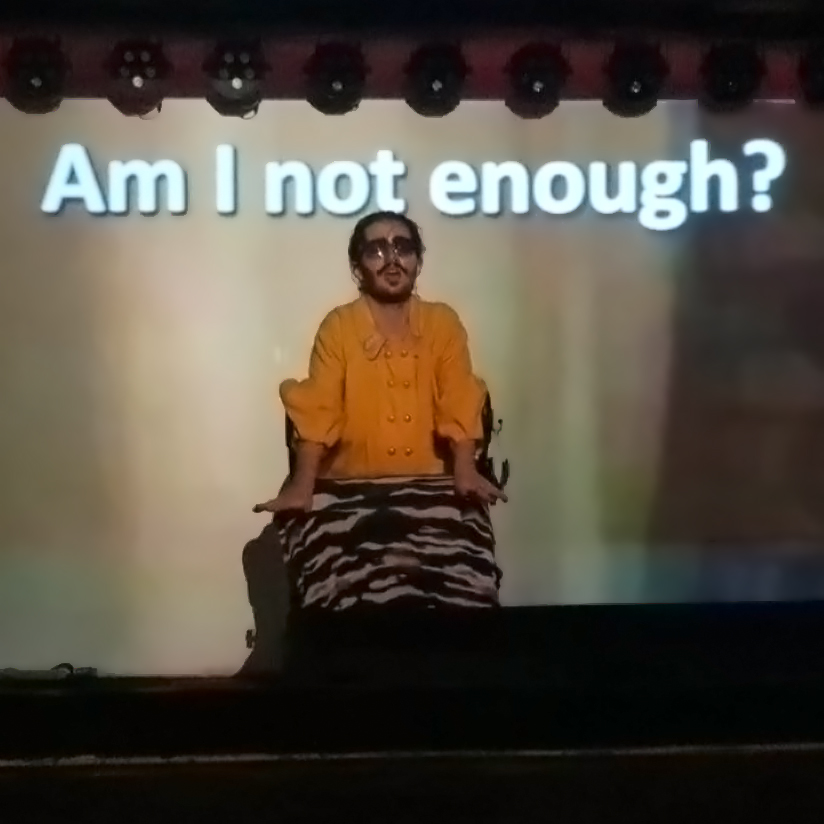What comes to mind when you think of accessibility?
According to the Office for Civil Rights (OCR) at the U.S. Department of Education, accessibility is “when a person with a disability is afforded the opportunity to acquire the same information, engage in the same interactions, and enjoy the same services as a person without a disability in an equally integrated and equally effective manner, with substantially equivalent ease of use.”
When events and venues are made accessible, it allows more people to attend and makes everything more fun! We recently asked folks what was the most accessible event they’ve participated in, and their responses were truly exciting.
“I used to do inclusion facilitation at a children’s theatre [called Imagination Stage] for their day camps. Everything they did was so thoughtful and intentional. That was 10 years ago, but I bet their access has only grown since then.”
Including people of all abilities and backgrounds in the production of theatre and the arts is important for many reasons. It not only provides the individual with the opportunity to nourish their creative growth, but it also allows viewers and audience members to see themselves represented on stage and in the arts community. Representation matters!
“A producer asked their lighting techs to keep the strobe lights off for me. They did, and it meant that I didn’t have to worry about any medical issues that night.”
Strobe lights can be an exciting visual effect, but they can also be harmful. Certain light frequencies can trigger people with photosensitive epilepsy. Photosensitive epileptic seizures can often cause loss of consciousness, muscle contractions, and loss of bladder control. Strobe lights can be harmful to people without epilepsy as well. They can cause migraines or flicker vertigo, which has symptoms that include disorientation, rapid eye movement and blinking, nausea, and rigid muscles. Be sure to use caution if you decide to use strobe lights at your event… or just don’t use them.
“One of my favorite memories of living abroad for four years was how theaters would use live captioning in multiple languages projected on the stage/screen. I think this is becoming more popular in the States now but I still don’t always see a lot of investment in it.”
Live-captioning is an innovative technology that allows people to receive captions of spoken language in real time. This benefits individuals with hearing impairments, that have language barriers, or who process information differently. Live-captioning enhances the ability to access information and communicate more effectively.
“I performed in a venue where I could roll through the door, use the restroom, change in the green room, and get on stage!“
The architecture of a building is extremely important for people who use wheelchairs or other mobility aids. The entrance can be accessible, but the individuals can’t attend the event if there are stairs with no elevator or ramp.
”I was able to attend a virtual show because the producers offered a sliding scale for tickets.”
Sliding scale ticket prices allow folks with different incomes to participate. This is not only important for people on fixed incomes, such as those on Social Security Disability, but actually gives the opportunity for people that can afford more than the ticket price to pay more as a donation!
“The DisabiliTease Academy offers live-streamed classes, which means that I can take them from home. And if I can’t make it at that time, I can watch the recording later. The flexibility is great since there aren’t any local in-person classes, and my health can be unpredictable.”
Live-streamed and recorded events allow more people to participate that may otherwise not have access due to physical, financial, time, or transportation constraints, not just those with disabilities.

Some other responses to our post include:
- The [venue] I worked had a ramp and a separate [accessible bathroom] for my dressing room.
- I work for a physically integrated dance company so just about all of the locations we perform in are accessible.
- Deeva Rose’s show for Take It Off at the Gay 90s. I found I could enter the building and take an elevator upstairs and get on the stage without a single step
- Went to a private function at a super accessible venue (for me) which has been my top for access so far. I’ve been to very few shows that I would go out of my way to praise their accessibility though, many are bare minimum if that and essentially just “allow” me to physically get inside.
Accessibility is important for everyone. It can come in the form of elevators and spacious bathrooms, live captions, virtual and recorded events, sliding-scale prices, and so much more. If everyone has access to the events they want to attend, it brings about an increased quality of life and creates more independence and more opportunities for social connection. Make your events accessible!
Sources and further reading:
- Understanding the Definition of Accessibility [American Consortium for Equality in Education]
- What is Live Captioning and Why You Will Need It [Notta.ai]
- Are strobe lights dangerous? [Charlotte Eye Ear Nose & Throat Associates, P.A.]
- The main benefits of improving accessibility and how accessibility benefits society [O’Herlihy Access Consultancy Limited]
- What is the best virtual class you’ve ever taken? [DisabiliTease Academy]
- Return To Stage: Captioning, Transcription and Non-Auditory Access Workshop [Sparkle Plenty and Kay Slater]

Oliver Twirl
Oliver Twirl is sitting on a walker in the middle of a dark stage with the words, "Am I not enough? projected behind them.
Read last month’s post which answers the question “What was one accommodation you were pleasantly surprised existed, even without having to ask?”

